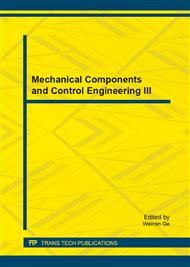p.314
p.318
p.322
p.326
p.331
p.336
p.343
p.347
p.352
Research on Coanda Effect Appeared in Oil-Air Annular Flow through the Conical Diffuser
Abstract:
Physical model and numerical simulation model for oil-air annular flow through conical diffusers are built by Fluent, and Coanda Effect, a commonly phenomenon, appeared in this kind of oil-air annular flow field is studied, especially influences of Coanda Effect on the attachment of the liquid phase of annular flow trended to the curved wall are analyzed in detail by changing expansion angles to calculate the radial pressure distribution and pressure drop, employed numerical simulation method, in this paper. The simulation results show that the expansion angle has a great influence on the attachment of liquid phase in annular flow to the curved wall, the radial pressure gradient is an important factor of the Coanda Effect which make the liquid phase of annular flow convey near the wall, and the radial pressure gradient will decrease but the pressure drop increase when the expansion angle becomes larger. These conclusions will provide useful reference in designing pipelines conveying the two-phase annular flow in oil-air lubrication system.
Info:
Periodical:
Pages:
331-335
Citation:
Online since:
October 2014
Authors:
Keywords:
Price:
Сopyright:
© 2014 Trans Tech Publications Ltd. All Rights Reserved
Share:
Citation:


